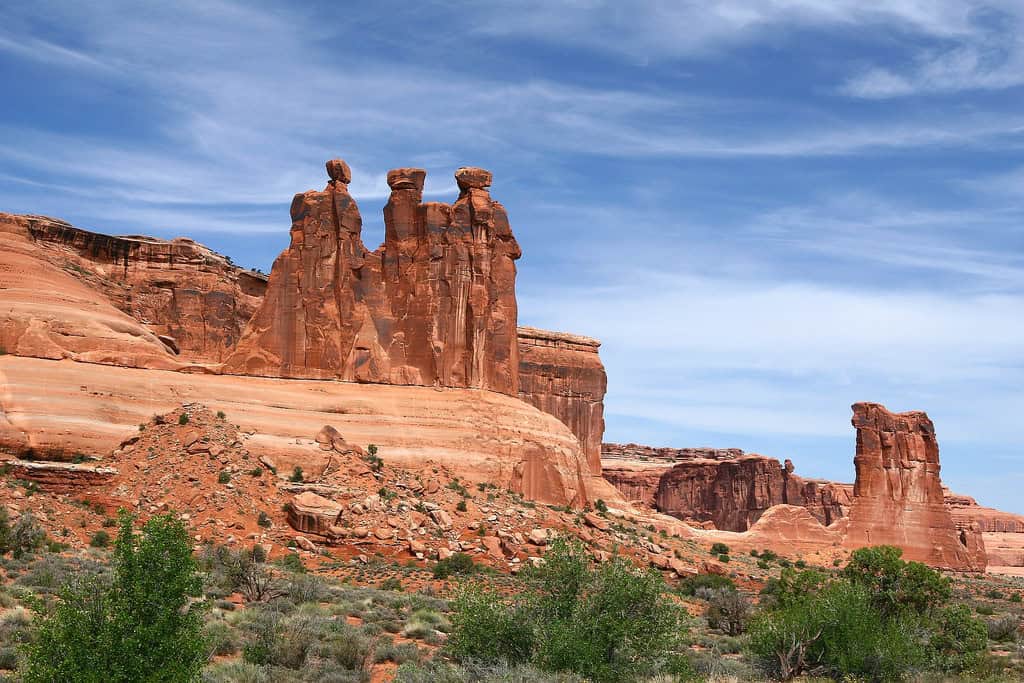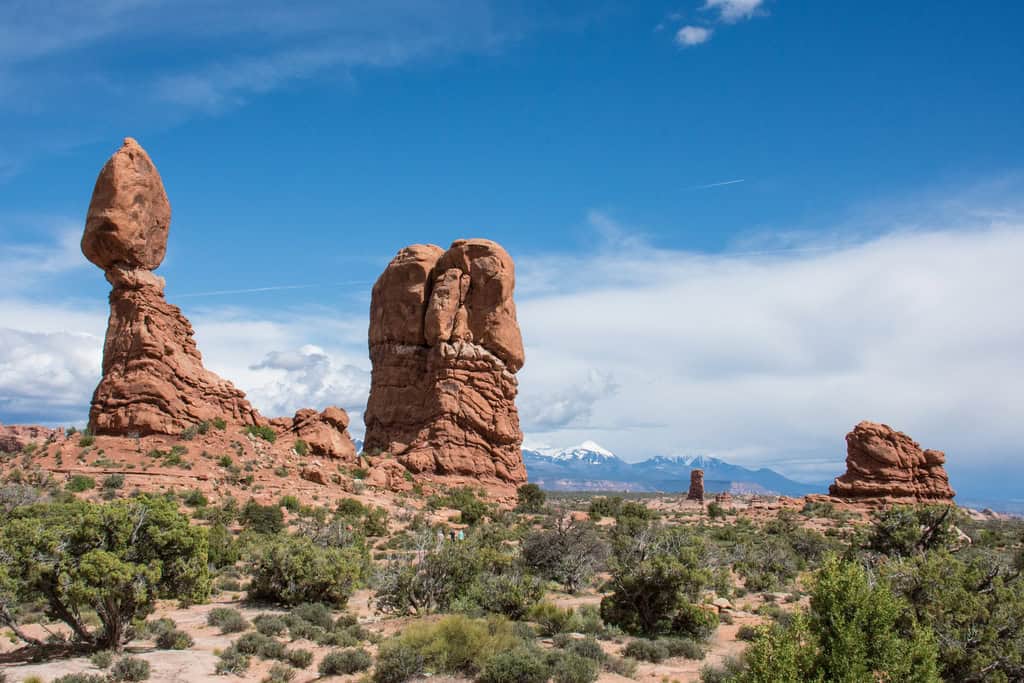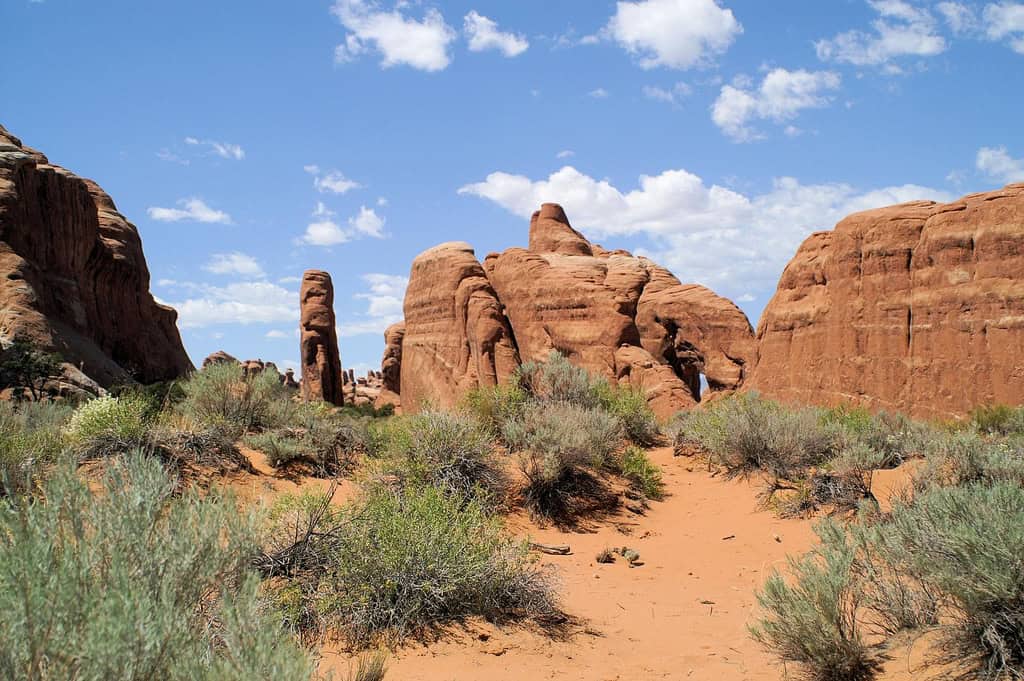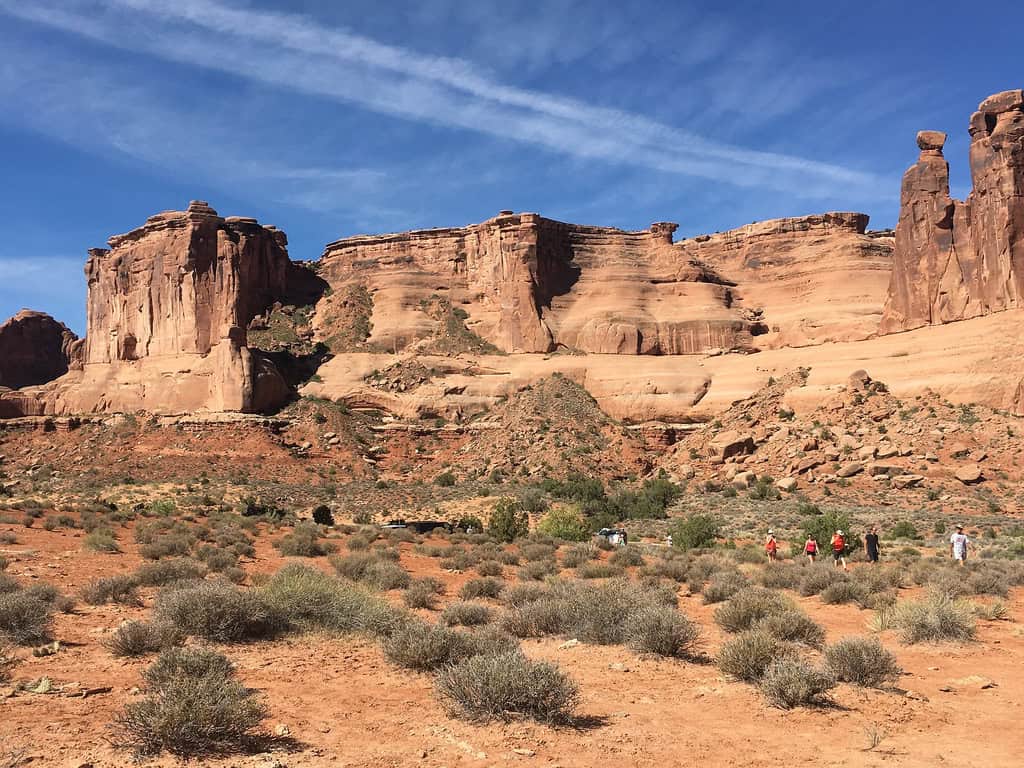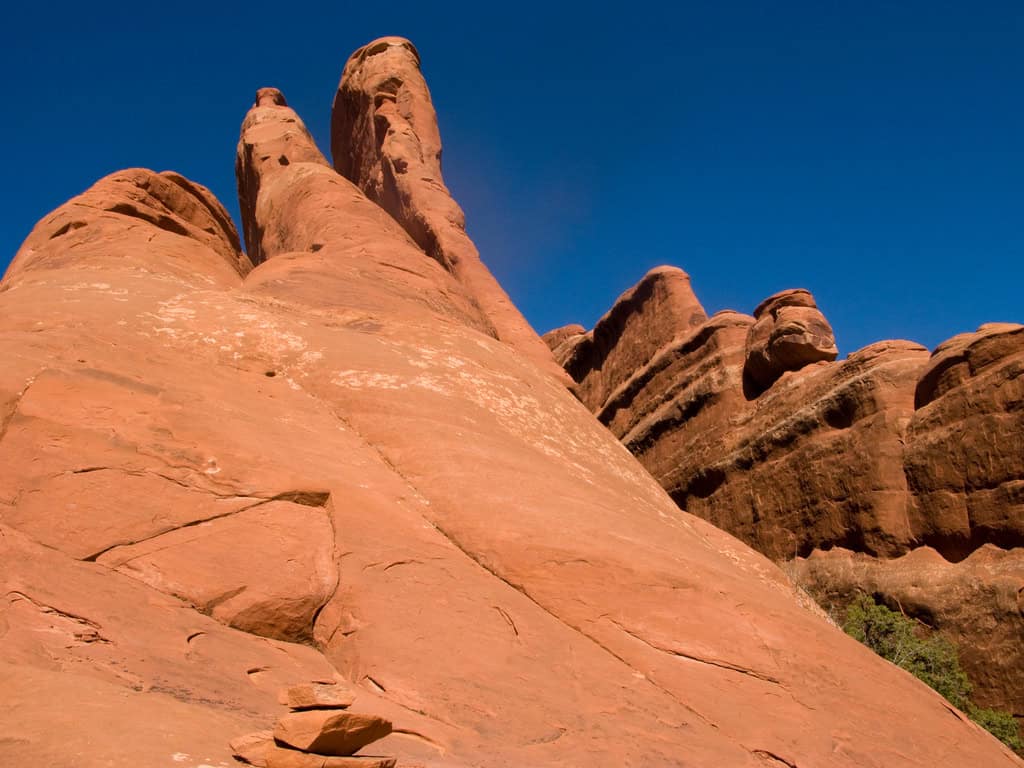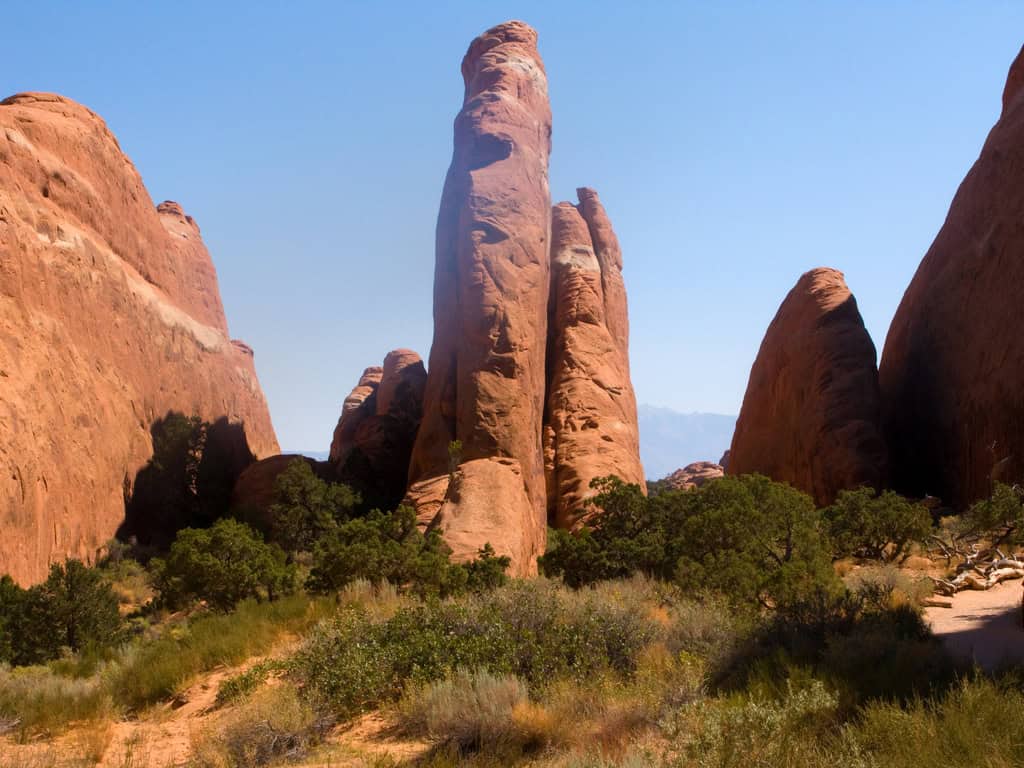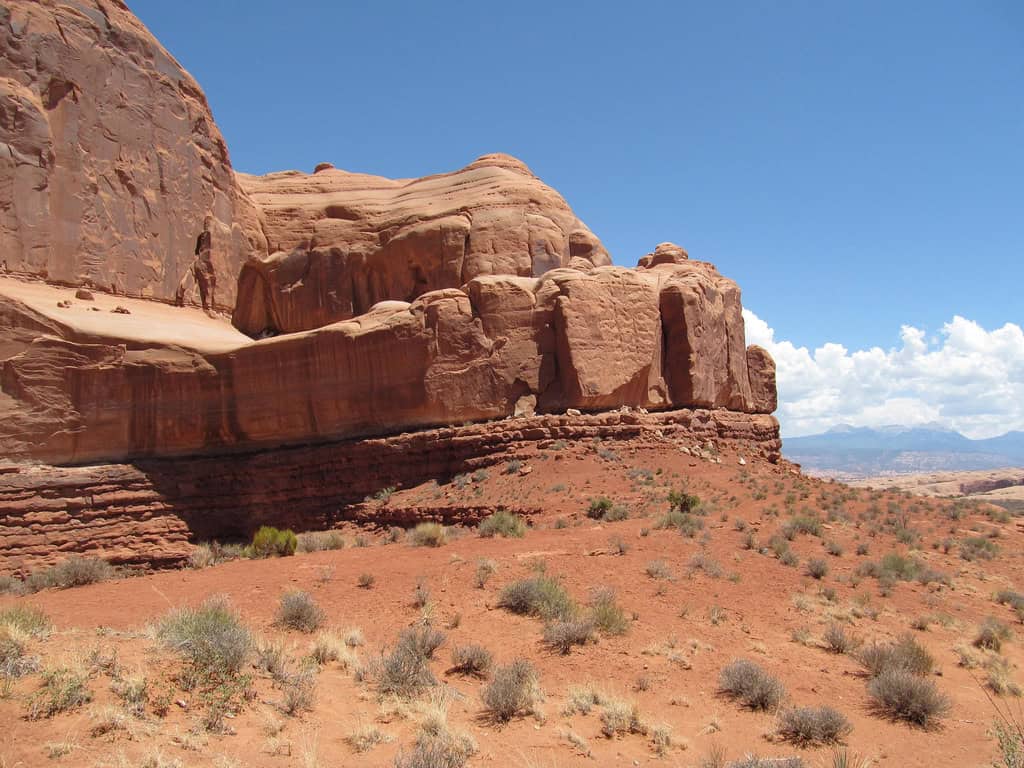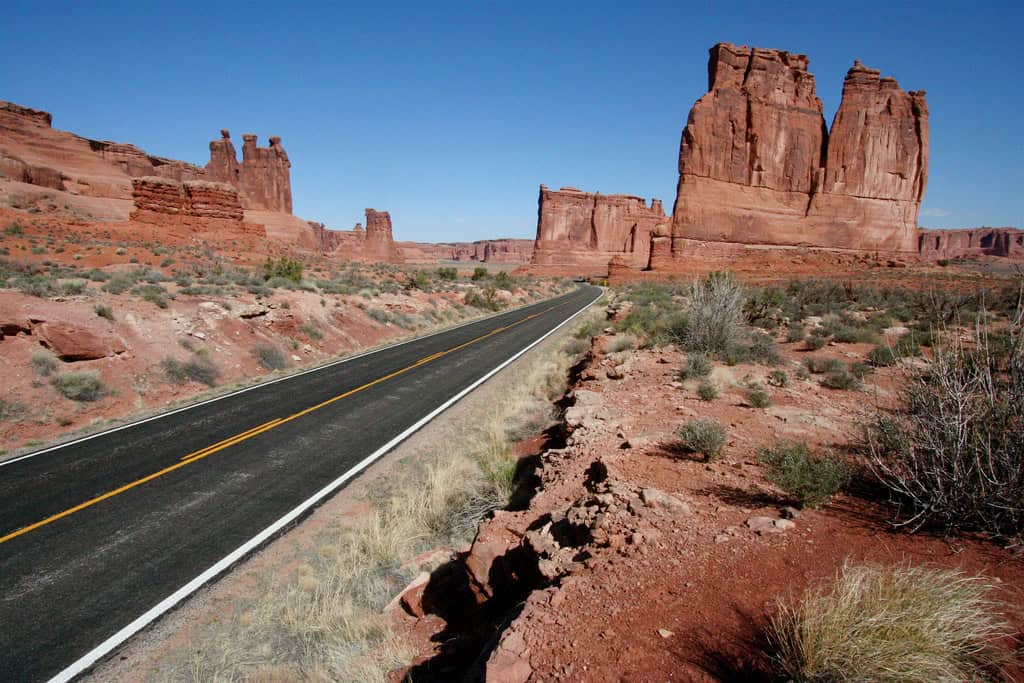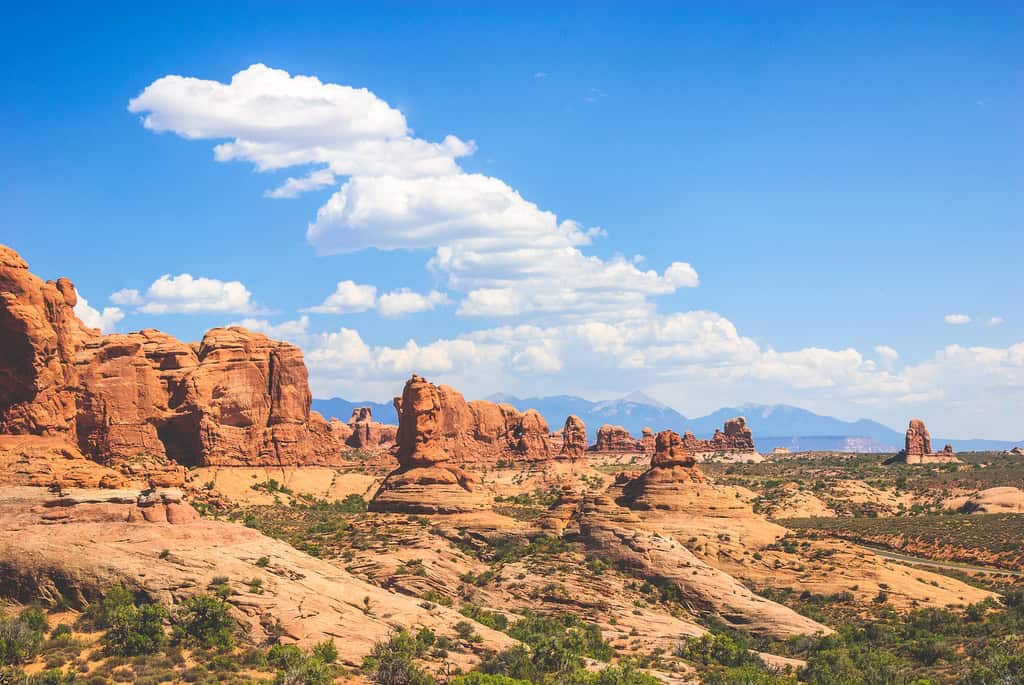
Arches National Park, located in eastern Utah near the town of Moab, is a mesmerizing landscape filled with over 2,000 natural stone arches, towering pinnacles, massive rock fins, and giant balanced rocks. Covering 76,679 acres, the park offers a wealth of geological wonders and breathtaking vistas. From iconic landmarks to hidden gems, this guide will help you explore the best that Arches National Park has to offer.
1. Introduction to Arches National Park
Arches National Park is renowned for its natural sandstone arches, formed over millions of years by the forces of erosion. The park’s unique geological formations are complemented by stunning desert landscapes and diverse flora and fauna. Whether you’re a hiker, photographer, or simply a nature lover, Arches National Park provides an unforgettable experience.
2. Essential Visitor Information
Getting There
Arches National Park is easily accessible by car:
- Nearest Major Airport: Grand Junction Regional Airport (approximately 110 miles away).
- Driving: The park entrance is located just 5 miles north of Moab, Utah, off U.S. Highway 191.
Best Time to Visit
The best times to visit Arches National Park are during the spring (March to May) and fall (September to November) when temperatures are mild. Summer can be extremely hot, while winter temperatures are cooler and less crowded.
Entrance Fees
As of 2024, the entrance fees are:
- $30 per vehicle (valid for 7 days)
- $25 per motorcycle (valid for 7 days)
- $15 per individual (walk-in or bicycle, valid for 7 days) Annual passes and senior passes are also available.
3. Must-See Arches and Rock Formations
Delicate Arch
Delicate Arch is the most iconic landmark in the park, and arguably one of the most recognizable natural arches in the world. The freestanding arch is 46 feet high and 32 feet wide, creating a stunning frame for the surrounding landscape.
How to Visit:
- Delicate Arch Trail: A 3-mile round trip hike with some steep sections. The trailhead is located at Wolfe Ranch.
- Viewpoints: If you prefer not to hike, you can view Delicate Arch from the Lower Delicate Arch Viewpoint (accessible) or the Upper Delicate Arch Viewpoint, which requires a short walk.
Landscape Arch
Landscape Arch is the longest arch in North America, stretching 306 feet from base to base. Its thin and delicate appearance makes it a must-see.
How to Visit:
- Devils Garden Trail: A relatively easy 1.6-mile round trip hike from the Devils Garden trailhead. The trail is mostly flat and family-friendly.
Double Arch
Double Arch is a pair of arches that share the same stone foundation. It’s one of the tallest arches in the park, with a height of 112 feet and a span of 144 feet.
How to Visit:
- Double Arch Trail: A short 0.5-mile round trip walk from the Windows parking area. The trail is flat and accessible.
The Windows Section
The Windows Section features a concentration of arches and rock formations, including the North and South Windows, and Turret Arch. This area is particularly stunning at sunrise and sunset.
How to Visit:
- The Windows Loop Trail: A 1-mile loop trail that takes you past North and South Windows and Turret Arch. The trail is easy and suitable for all ages.
Balanced Rock
Balanced Rock is a striking formation where a large rock appears to be precariously balanced on a narrow pedestal. The rock stands at 128 feet tall, with the balanced rock itself measuring 55 feet.
How to Visit:
- Balanced Rock Trail: A short, easy 0.3-mile loop around the base of the rock. The trailhead is located along the main park road.
Fiery Furnace
The Fiery Furnace is a labyrinth of narrow passages and towering fins. It’s a challenging and adventurous area that requires either a ranger-led tour or a special permit.
How to Visit:
- Ranger-Led Tours: Guided tours are available through the park’s visitor center.
- Self-Guided Permits: Obtain a permit from the visitor center if you prefer to explore on your own. Note that navigation can be difficult, and experience is recommended.
4. Hiking Trails
Arches National Park offers a variety of hiking trails, ranging from short walks to more strenuous treks. Here are some recommended trails:
Easy Trails
- Balanced Rock Trail: 0.3-mile loop, offering close views of Balanced Rock.
- Double Arch Trail: 0.5-mile round trip, leading to the impressive Double Arch.
- The Windows Loop Trail: 1-mile loop, showcasing several large arches.
Moderate Trails
- Delicate Arch Trail: 3 miles round trip, leading to the iconic Delicate Arch.
- Devils Garden Trail to Landscape Arch: 1.6 miles round trip, leading to the impressive Landscape Arch.
- Park Avenue Trail: 2 miles round trip, passing through a canyon with towering rock walls.
Strenuous Trails
- Devils Garden Primitive Loop: 7.2 miles round trip, offering views of several arches and challenging terrain.
- Tower Arch Trail: 3.4 miles round trip, leading to a less-visited but spectacular arch.
5. Photography Hotspots
Arches National Park is a paradise for photographers, with dramatic landscapes and unique rock formations. Here are some of the best spots for capturing stunning images:
Delicate Arch
- Best Time: Sunset for warm, golden light.
- Tips: Arrive early to secure a good spot and avoid crowds.
The Windows Section
- Best Time: Sunrise for soft, diffused light.
- Tips: Explore different angles for unique compositions.
Landscape Arch
- Best Time: Early morning for even lighting and fewer visitors.
- Tips: Use a wide-angle lens to capture the full span of the arch.
Balanced Rock
- Best Time: Sunset for dramatic shadows and colors.
- Tips: Experiment with silhouettes and reflections in nearby puddles after rain.
Fiery Furnace
- Best Time: Late afternoon for warm, glowing light.
- Tips: Permits or guided tours are required, so plan accordingly.
6. Wildlife and Nature Viewing
Despite its arid environment, Arches National Park is home to a variety of wildlife. Visitors may encounter:
Mammals
- Desert Bighorn Sheep: Often seen in rocky areas and canyons.
- Mule Deer: Commonly spotted in the early morning or late afternoon.
Birds
- Ravens: Frequently seen soaring above the park.
- Red-Tailed Hawks: Often observed hunting in open areas.
Reptiles
- Lizards: Various species can be seen basking on rocks.
- Snakes: Including harmless species like the gopher snake and the more elusive rattlesnake.
Nature Viewing Tips
- Observe wildlife from a distance.
- Avoid feeding or approaching animals.
- Early morning and late afternoon are the best times for wildlife viewing.
7. Cultural and Historical Sites
Arches National Park also has cultural and historical significance, with evidence of Native American habitation and early settler activity.
Wolfe Ranch
Wolfe Ranch, also known as the Turnbow Cabin, is a historic site near the Delicate Arch trailhead. It was built by John Wesley Wolfe, a Civil War veteran, in the late 1800s.
How to Visit:
- Wolfe Ranch Trail: A short, easy walk from the Delicate Arch trailhead. The site includes a cabin, corral, and a nearby Ute petroglyph panel.
Ute Petroglyphs
Near Wolfe Ranch, you’ll find a panel of petroglyphs attributed to the Ute people, depicting human and animal figures.
How to Visit:
- Wolfe Ranch Trail: The petroglyphs are located along the same trail to Wolfe Ranch.
8. Camping in Arches
Camping is a great way to immerse yourself in the natural beauty of Arches National Park. The park offers one developed campground:
Devils Garden Campground
- Location: At the end of the main park road, 18 miles from the entrance.
- Facilities: 50 campsites, including both tent and RV sites, with picnic tables, fire rings, and flush toilets.
- Reservations: Strongly recommended, especially during peak seasons. Reservations can be made through Recreation.gov.
9. Nearby Attractions
While Arches National Park is a destination in itself, there are several nearby attractions worth exploring:
Canyonlands National Park
Located just 30 miles from Arches, Canyonlands National Park features dramatic desert landscapes, deep canyons, and the Colorado River.
Dead Horse Point State Park
Offering some of the most breathtaking views in the area, Dead Horse Point State Park overlooks a gooseneck bend in the Colorado River, with vistas extending for miles.
Moab
The town of Moab serves as the gateway to Arches and offers a range of amenities, including lodging, dining, and outdoor adventure opportunities such as mountain biking and rafting.
Corona Arch
Just outside of Moab, Corona Arch is another stunning natural arch accessible via a 3-mile round trip hike. It’s less crowded than the arches within the national park, making for a more tranquil experience.
10. Tips for Visiting Arches National Park
Stay Hydrated
The desert environment can be extremely dry and hot. Carry plenty of water and drink regularly to avoid dehydration.
Dress Appropriately
Wear lightweight, breathable clothing in the summer, and layers in the cooler months. A wide-brimmed hat and sunscreen are essential.
Leave No Trace
Respect the park’s natural beauty by following the Leave No Trace principles. Pack out all trash, stay on designated trails, and avoid disturbing wildlife.
Plan Ahead
Due to the park’s popularity, parking can be challenging, especially at major trailheads. Arrive early in the morning or late in the afternoon to avoid the crowds and find parking more easily.
Be Prepared
Cell service is limited within the park. Carry a map, first aid kit, and inform someone of your plans before heading out.
Arches National Park is a place of awe-inspiring beauty and geological wonder. From the iconic Delicate Arch to the intricate Fiery Furnace, every corner of the park offers a unique and unforgettable experience. Whether you’re hiking through its stunning landscapes, capturing the perfect photograph, or simply soaking in the serenity of the desert, Arches National Park promises an adventure that will leave you with memories to last a lifetime. By planning ahead and respecting the park’s natural and cultural resources, you can ensure a safe and enjoyable visit, leaving with a deep appreciation for this incredible national treasure.
